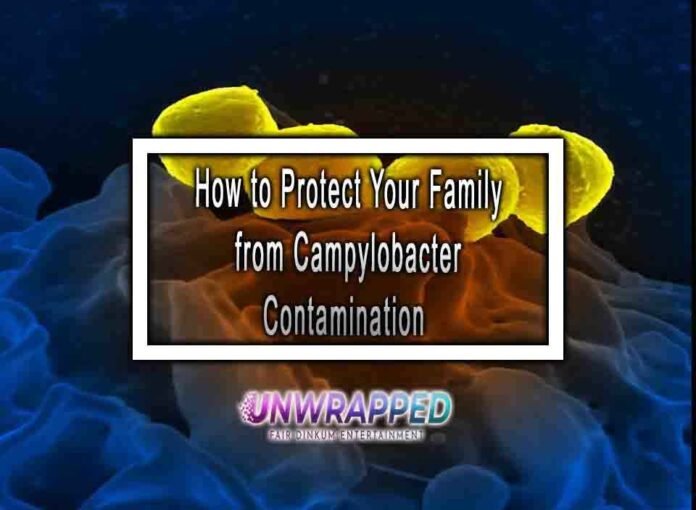Campylobacter is a type of bacteria commonly associated with foodborne illness. Contamination often occurs through the consumption of contaminated food, especially raw or undercooked poultry, unpasteurized milk, and untreated water. Protecting your family from Campylobacter contamination involves practicing good food safety and hygiene measures. Here are some key tips:
1. Safe Food Handling:
- Cook Poultry Thoroughly: Ensure that poultry, including chicken and turkey, is cooked thoroughly. Use a food thermometer to check that the internal temperature reaches at least 165°F (74°C).

- Avoid Cross-Contamination: Keep raw poultry separate from other foods to prevent cross-contamination. Use separate cutting boards, utensils, and plates for raw and cooked foods.
2. Safe Drinking Water:
- Use Safe Water Sources: Ensure that drinking water comes from safe and reliable sources. If you are unsure about the safety of the water, consider using boiled or treated water.
3. Avoid Raw Milk:
- Choose Pasteurized Products: Consume only pasteurized milk and dairy products. Raw milk and unpasteurized dairy can carry a risk of Campylobacter contamination.
4. Proper Handwashing:
- Thorough Handwashing: Wash hands thoroughly with soap and water before preparing food, after handling raw poultry, after using the bathroom, and after changing diapers.
- Hand Sanitizers: While hand sanitizers are useful, they are not a substitute for proper handwashing, especially when hands are visibly soiled.
5. Safe Food Storage:
- Refrigerate Promptly: Refrigerate perishable foods promptly, especially those containing poultry, to slow the growth of bacteria.
- Avoid Raw or Undercooked Eggs: Avoid consuming raw or undercooked eggs, as they can also be a source of Campylobacter contamination.
6. Kitchen Hygiene:
- Regular Cleaning: Keep kitchen surfaces, utensils, and cutting boards clean by washing them with hot, soapy water after each use.
- Sanitize Sponges and Dishcloths: Regularly sanitize kitchen sponges and dishcloths, as they can harbor bacteria.
7. Safe Handling of Pets:
- Handwashing After Handling Pets: Wash hands thoroughly after handling pets, especially reptiles, which can carry Campylobacter. Avoid letting pets lick faces or share utensils.
8. Education and Awareness:
- Inform Family Members: Educate all family members about the importance of food safety, proper handwashing, and avoiding risky food practices.
- Teach Children: Teach children safe food handling practices, including the importance of not consuming raw cookie dough or cake batter.
9. Symptom Recognition:
- Be Aware of Symptoms: Familiarize yourself with the symptoms of Campylobacter infection, which include diarrhea, abdominal cramps, fever, and vomiting. Seek medical attention if symptoms persist or worsen.
10. Safe Outdoor Practices:
- Safe Barbecuing: When barbecuing, cook meat thoroughly, and avoid cross-contamination with utensils and surfaces.
- Safe Camping Practices: Practice safe food handling and hygiene when camping, including proper storage and cooking of food.
Conclusion:
Preventing Campylobacter contamination involves a combination of safe food handling practices, proper handwashing, and awareness of potential sources of contamination. By following these guidelines, you can help protect your family from foodborne illnesses associated with Campylobacter and promote a safe and healthy living environment. If you suspect foodborne illness or have concerns about symptoms, seek medical advice promptly.











